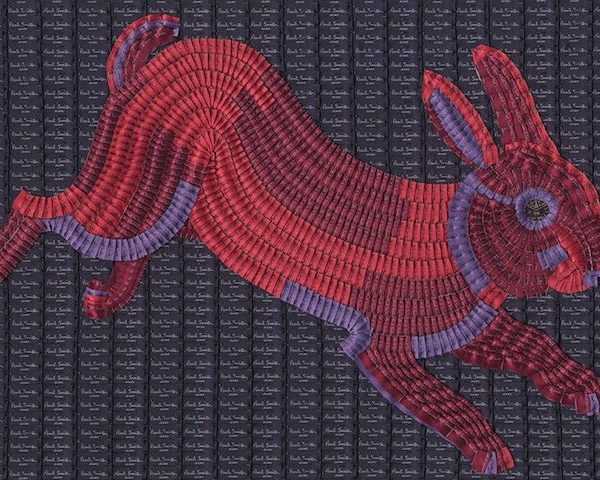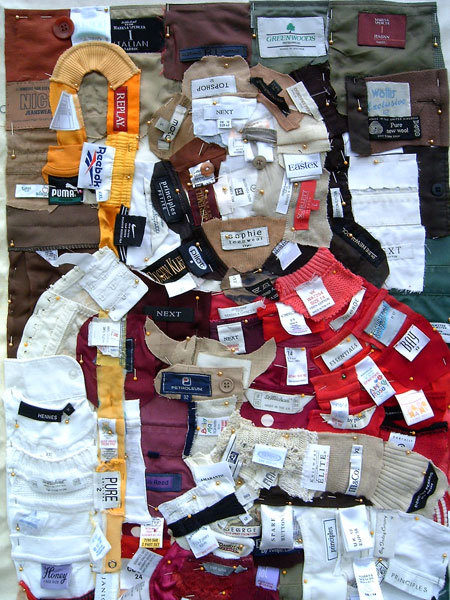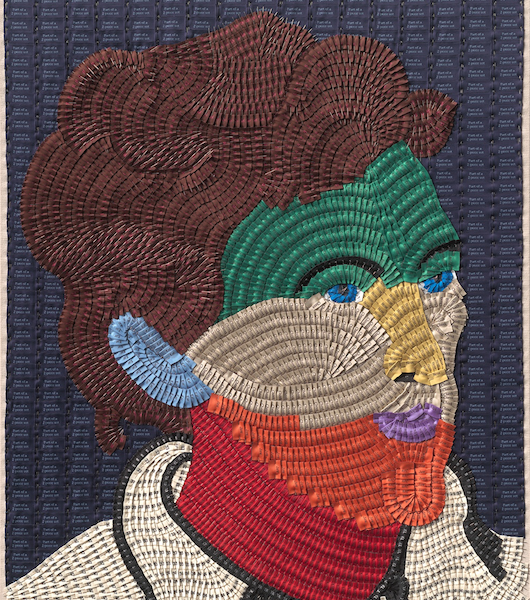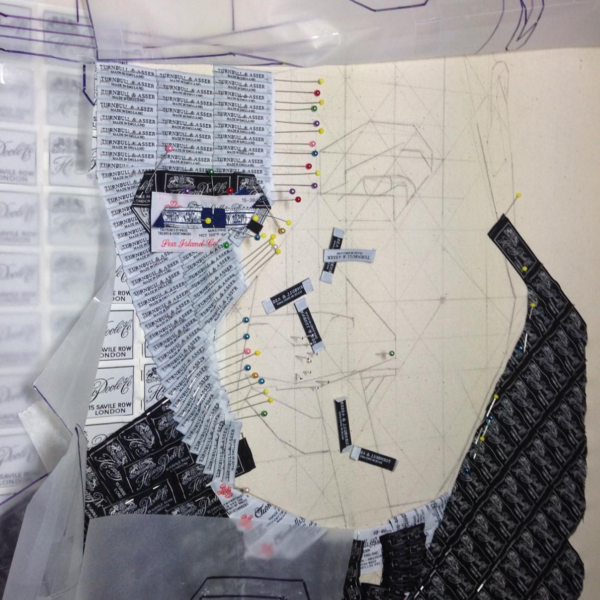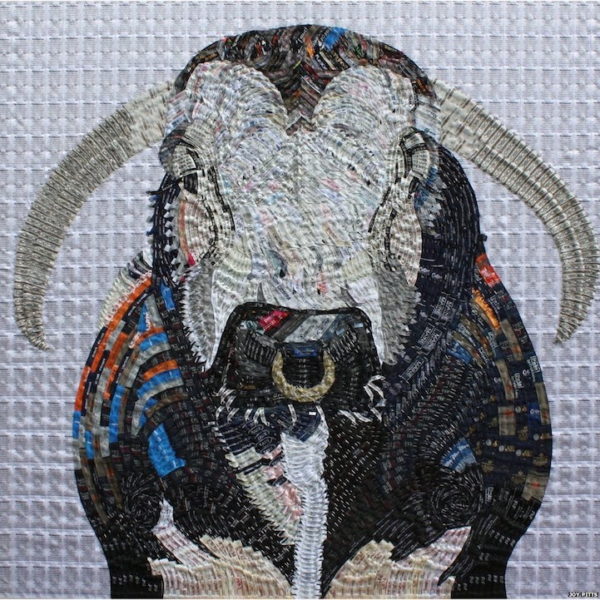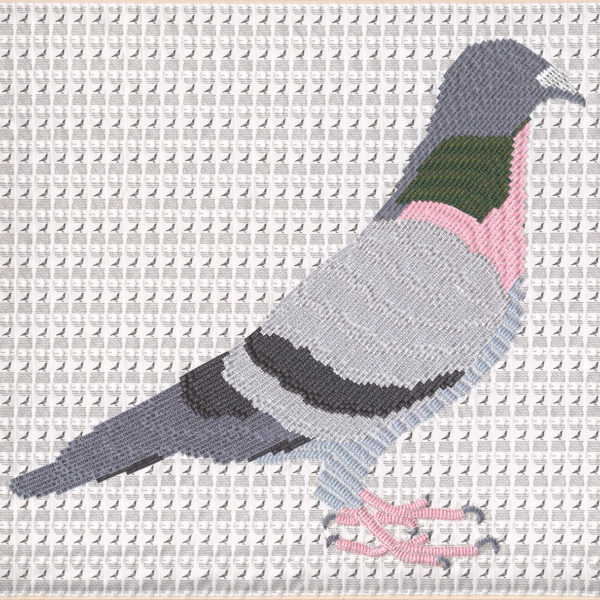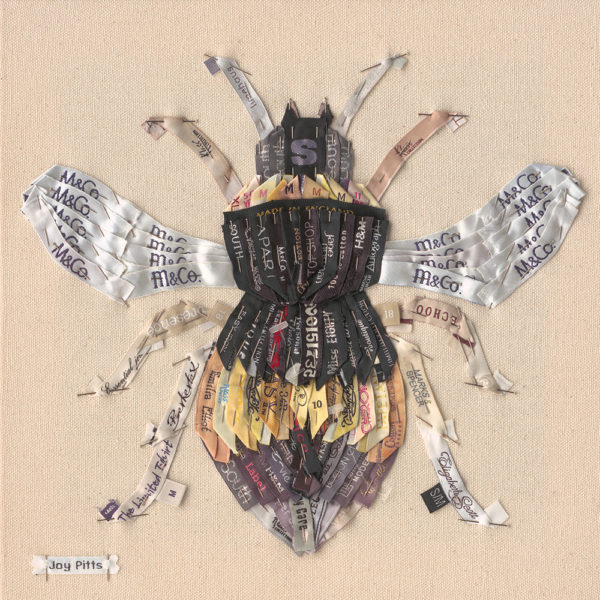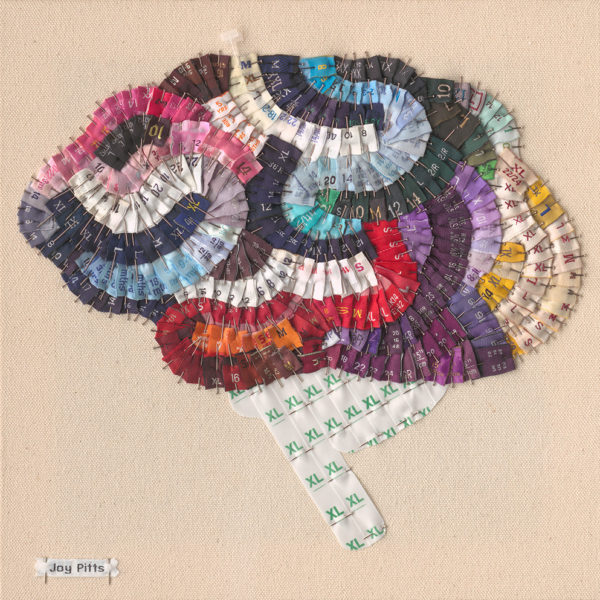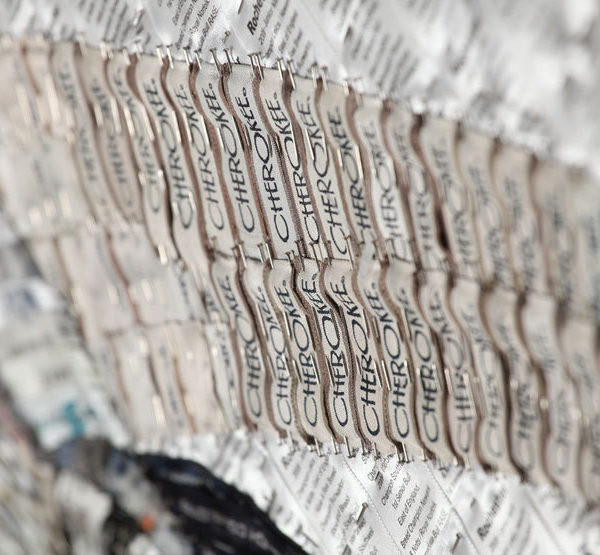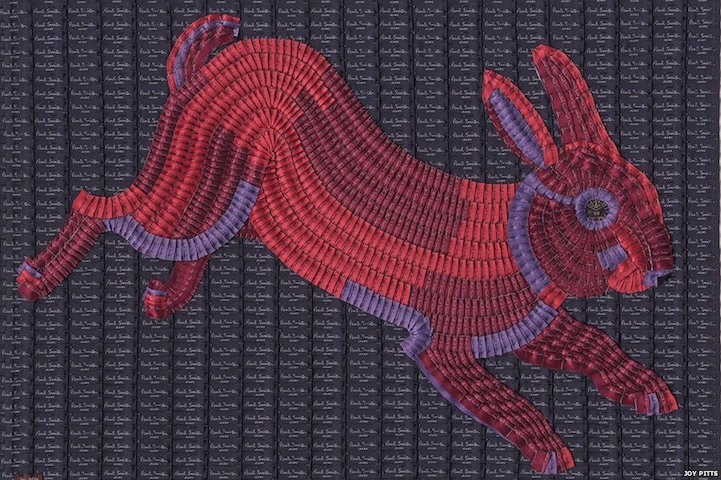
Some people resist labeling, but Joy Pitts has made a career out of it. The British artist recycles clothing labels – often collected from charity shops that would otherwise turn them into rags – and transforms them into brilliant works of art. Each piece is made by pinning individual labels against a canvas, using dressmaker pins, until they form a greater image. We recently talked with Joy about her work:
How did you land on this style of art?
I experimented with a lot of media in college, clothing being just one of them. The first piece of work was a “shopping bag” made with used clothing labels. It won a national competition at The Slug & Lettuce in London, and this encouraged me to continue. It’s basically a plastic shopping bag covered in used labels.
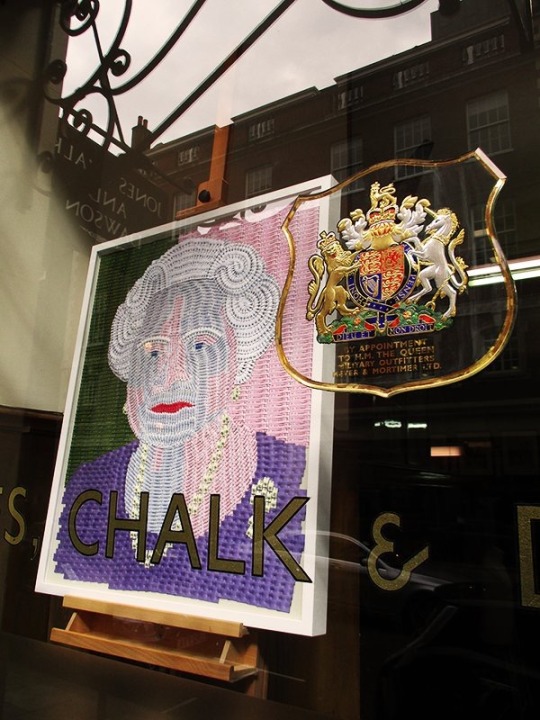
A lot of your work is done with used clothing labels. You must have gone through tens of thousands at this point. How do you collect these?
There are different areas of my work. I estimate that 50% of my time is spent sourcing and preparing used materials. The collection is ongoing and I usually make visits to charity shops once a week. I unpick labels from rag garments; I don’t buy the garments. I’ve assembled about 30,000 used labels over the past ten years.
I also make work from woven name tapes, such as the recent portrait of Her Majesty, and design my own labels for specific projects (such as this work titled “Jane”). For this piece on military boots, I invited 520 military servicemen and women to send in their name tapes. At this point, sometimes individuals and brands will also send me labels.
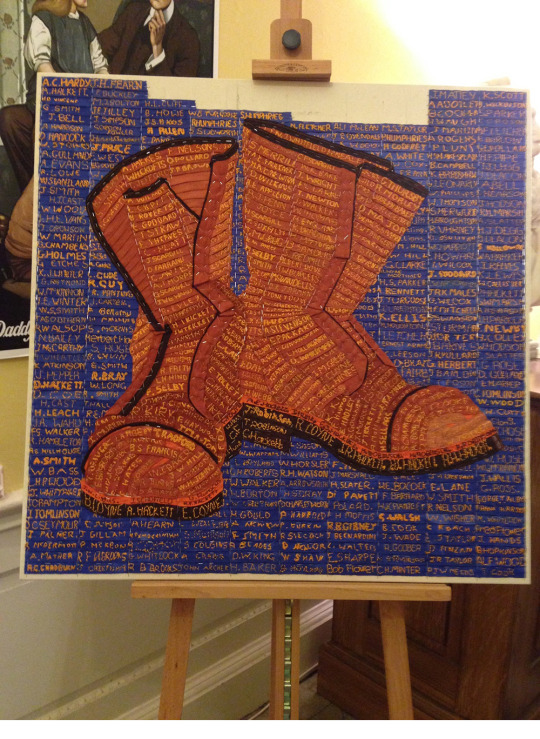

How do you make each of these pieces? Do you start with a sketch? Is there any digital technology used or is everything done by hand?
The entire process is done by hand. I usually start a project by visiting sites, which over the last ten years has included two farms, a cattle market, war memorials, and talks by specialists. This research helps me get closer to the subject, which gives the work context. It also allows me to take photographs from which to work.
From there, it takes one to two months to make one piece depending on the size of the canvas. I work from the photograph and begin with a sketch. The image is built-up using perspective and trial and error. I use only dressmaker pins to attach thousands of labels, and usually take a break after two days to give my hands a rest.
I imagine it varies by project, but how long does it take you to make one of these pieces?
The portrait of the Queen took about 136 hours to make and used 125 grams of dressmaker pins.
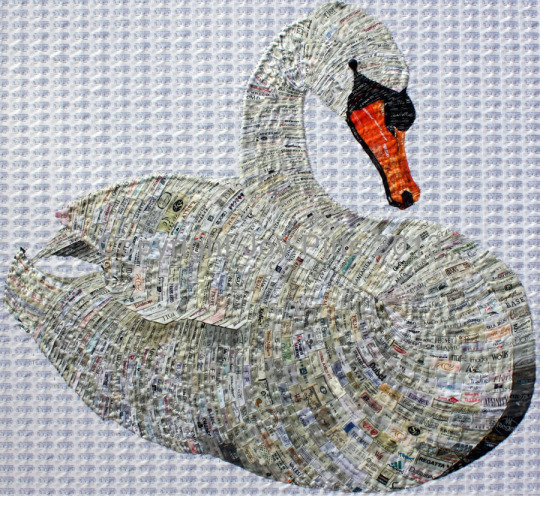
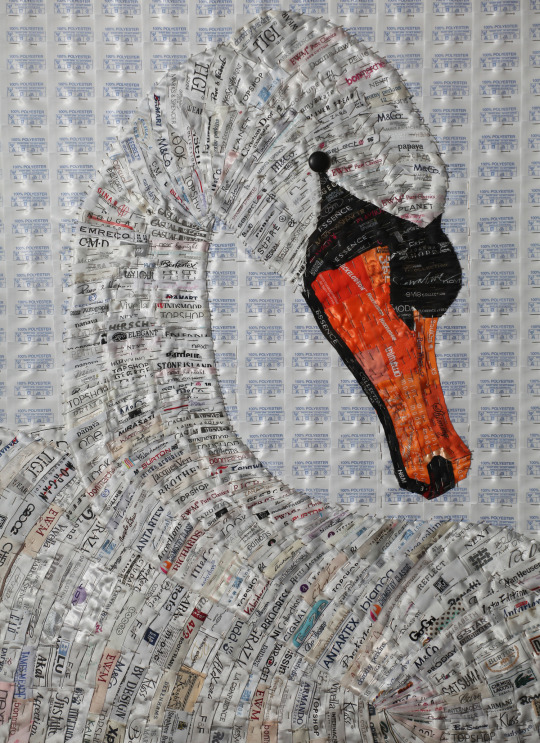
Is there a message behind your work or is this mostly about visual effect?
Contextual information lies with the detail of each piece, which I consider to be an essential element of my finished work. For example, the Queen is dedicated to our armed forces and I’ve assembled her portrait using names of those fallen in WWI. The swan has connections to beauty – the ugly duckling and Swan Lake. This reflects our desire to look good through the garments that we choose. Even the Longhorn Bull is bred for his good looks and ability to win prizes in the show rink. In fact, his whole life is focused around his image.

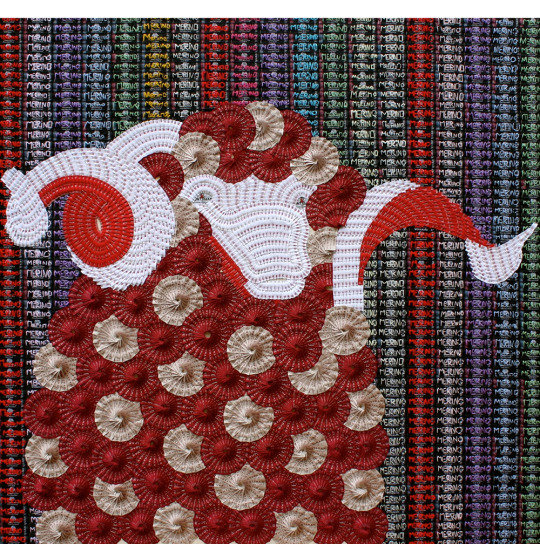
On your Instagram, it seems some stores have started to display your art – including one Savile Row tailoring house. Can you tell us how those arrangements come about?
The Merino Sheep was a collaboration with Huntsman at 11 Savile Row. It was displayed in their window for Wool Week when The Row was closed to graze sheep. I approached them and they supplied their red labels, which I used to assemble the body of the sheep. The Campaign for Wool promotes all things wool from a sustainable point of view, including wool suits from The Row.
Since I am often working with clothing labels, it seems natural to display my work in windows, just as a high street store would show off their goods. My work has been exhibited in three bookshop windows in Derbyshire and Norfolk. These are specialist shops and fit around the context of the work. The Winston Churchill portrait will tour to the three windows in London later in the year to coincide with the issue of #thenewfiver featuring Churchill.
I’ve heard that Paul Smith himself commissioned something. How did that come about and do you work with other designers or companies?
I wrote to Paul Smith once asking for some labels to use in my work. He said no but commissioned me to do a piece instead.
As my work has become more well-known, I do get approached to produce commissions. I also approach brands specifically if I would like to use their labels. For example, for my recent portrait of Winston Churchill, I chose Henry Poole of Savile Row, Turnbull & Asser of Jermyn Street, and Lock & Co, London because they all created bespoke items for Churchill. All three outfitters are very happy to supply labels for the project.

Finally, what are you working on now and what do you have planned for the future?
I’ve been commissioned by Bromley House Library in Nottingham to produce a piece of work to celebrate 200 years of the library. More information coming soon!
Many thanks for your time, Joy! Readers interested in Joy’s work can visit her website (where she blogs), as well as follow her on Twitter and Instagram. If you’re in the UK, you can also keep up with her exhibition schedule. She just finished up a show in Nottingham, but will have some more later this year.
